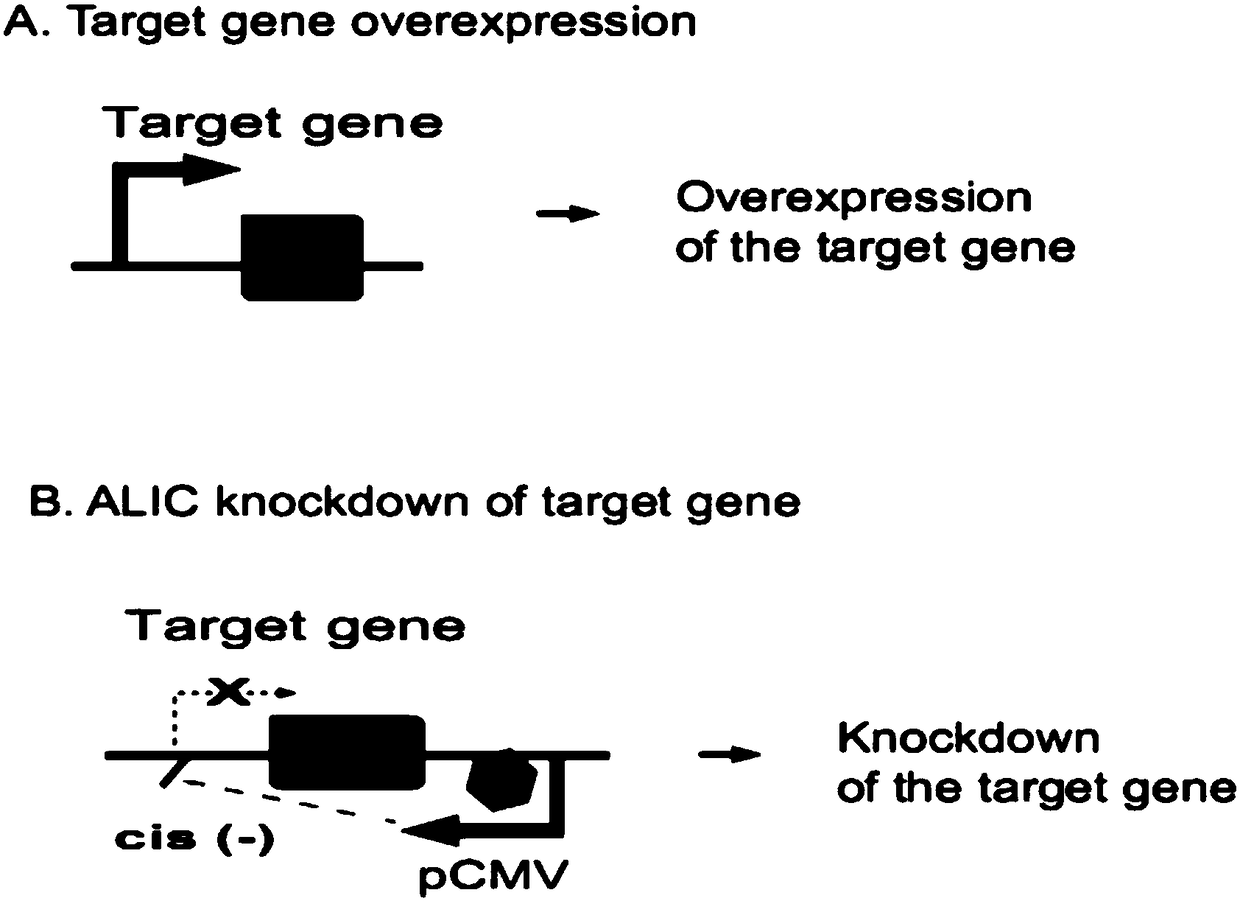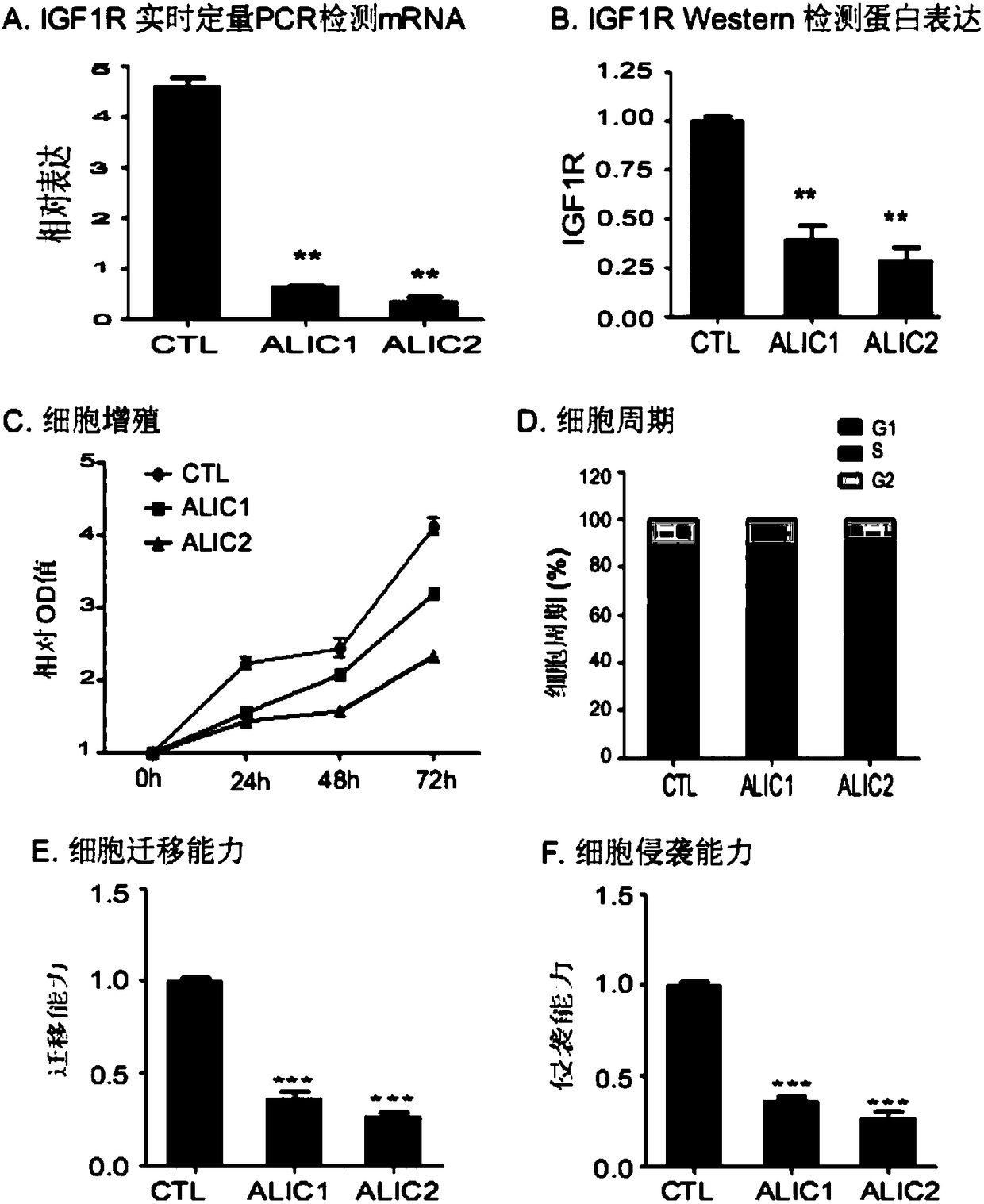Method for inhibiting target gene expression by antisense lncRNA-mediated cis-regulation
A target gene and antisense technology, applied in the field of molecular biology, can solve the problems of non-sustainable suppression, silencing, and non-persistence
- Summary
- Abstract
- Description
- Claims
- Application Information
AI Technical Summary
Problems solved by technology
Method used
Image
Examples
Embodiment Construction
[0015] 1. Selection of target sites
[0016] According to the target gene sequence design, select the target site that the PAM prespacer sequence is adjacent to the motif CRISPR Cas9-gRNA complex specifically recognizes and binds in the downstream sequence of the target gene promoter, including a PAM composed of three nucleotides NGG and Complementary binding to gRNA molecules. The described suppression of endogenous target gene is to use antisense lncRNA to have the function of competing endogenous target RNA, insert strong promoter on target gene through CRISPR Cas9 gene editing technology, synthesize a large amount of antisense lncRNA complementary to target gene, realize In situ cis-competitive repression of endogenous target gene expression.
[0017] 2. Construction of targeting vector pCD Cas9-gRNA1-pU6-gRNA2
[0018] Two gRNAs with pU6 and pH1 promoters were cloned into the targeting vector, and Pme I and Not I restriction sites were inserted behind the Cas9 nuclear l...
PUM
 Login to View More
Login to View More Abstract
Description
Claims
Application Information
 Login to View More
Login to View More - R&D
- Intellectual Property
- Life Sciences
- Materials
- Tech Scout
- Unparalleled Data Quality
- Higher Quality Content
- 60% Fewer Hallucinations
Browse by: Latest US Patents, China's latest patents, Technical Efficacy Thesaurus, Application Domain, Technology Topic, Popular Technical Reports.
© 2025 PatSnap. All rights reserved.Legal|Privacy policy|Modern Slavery Act Transparency Statement|Sitemap|About US| Contact US: help@patsnap.com



